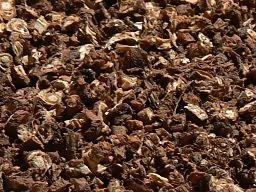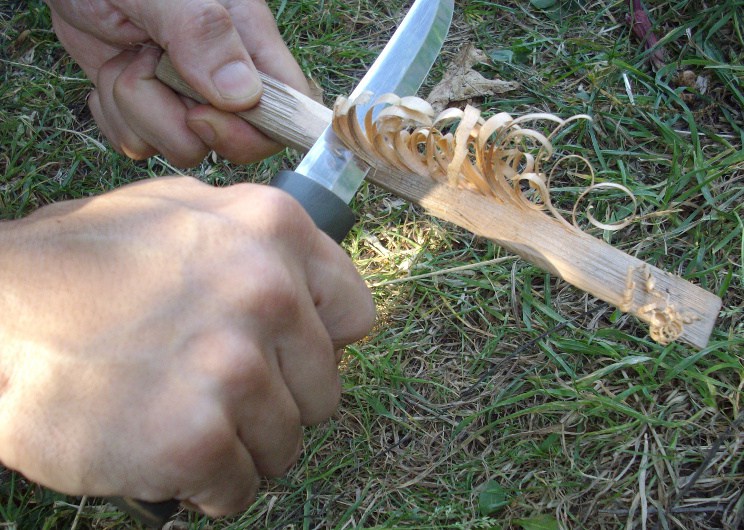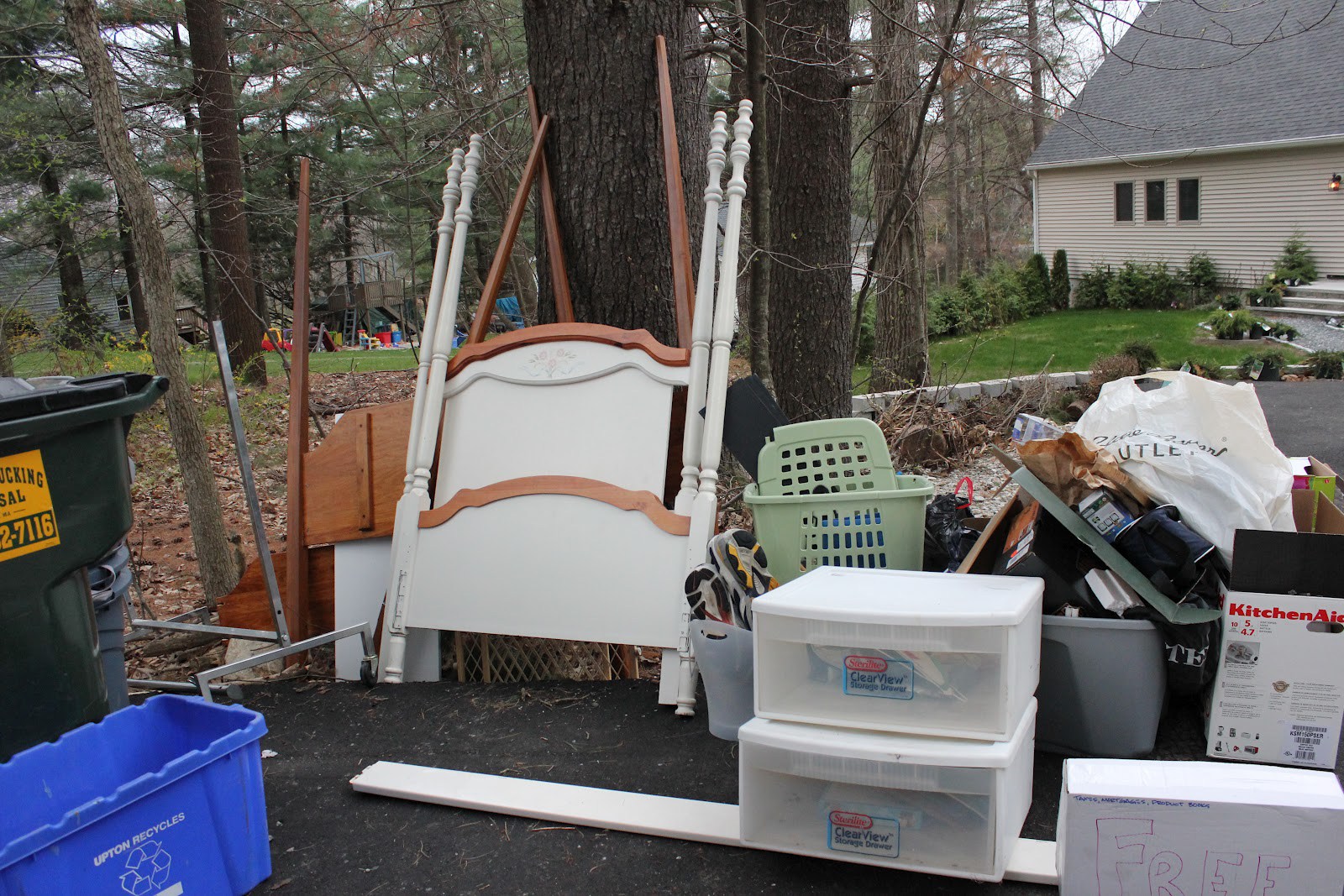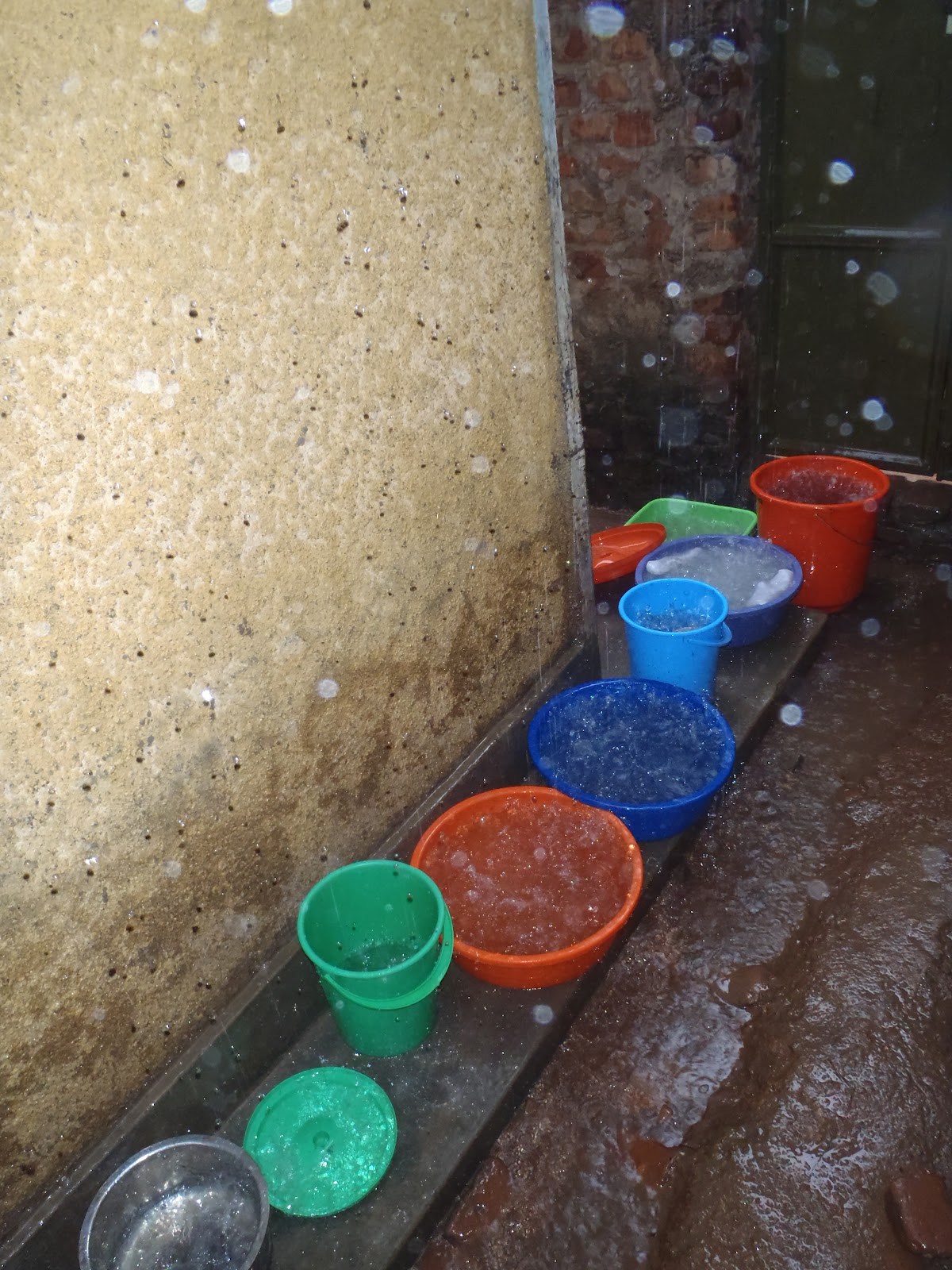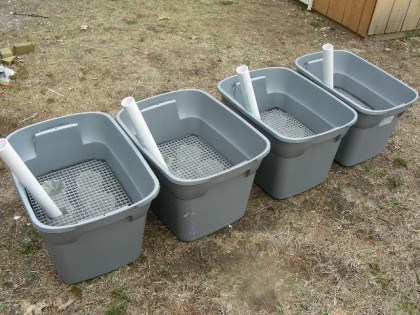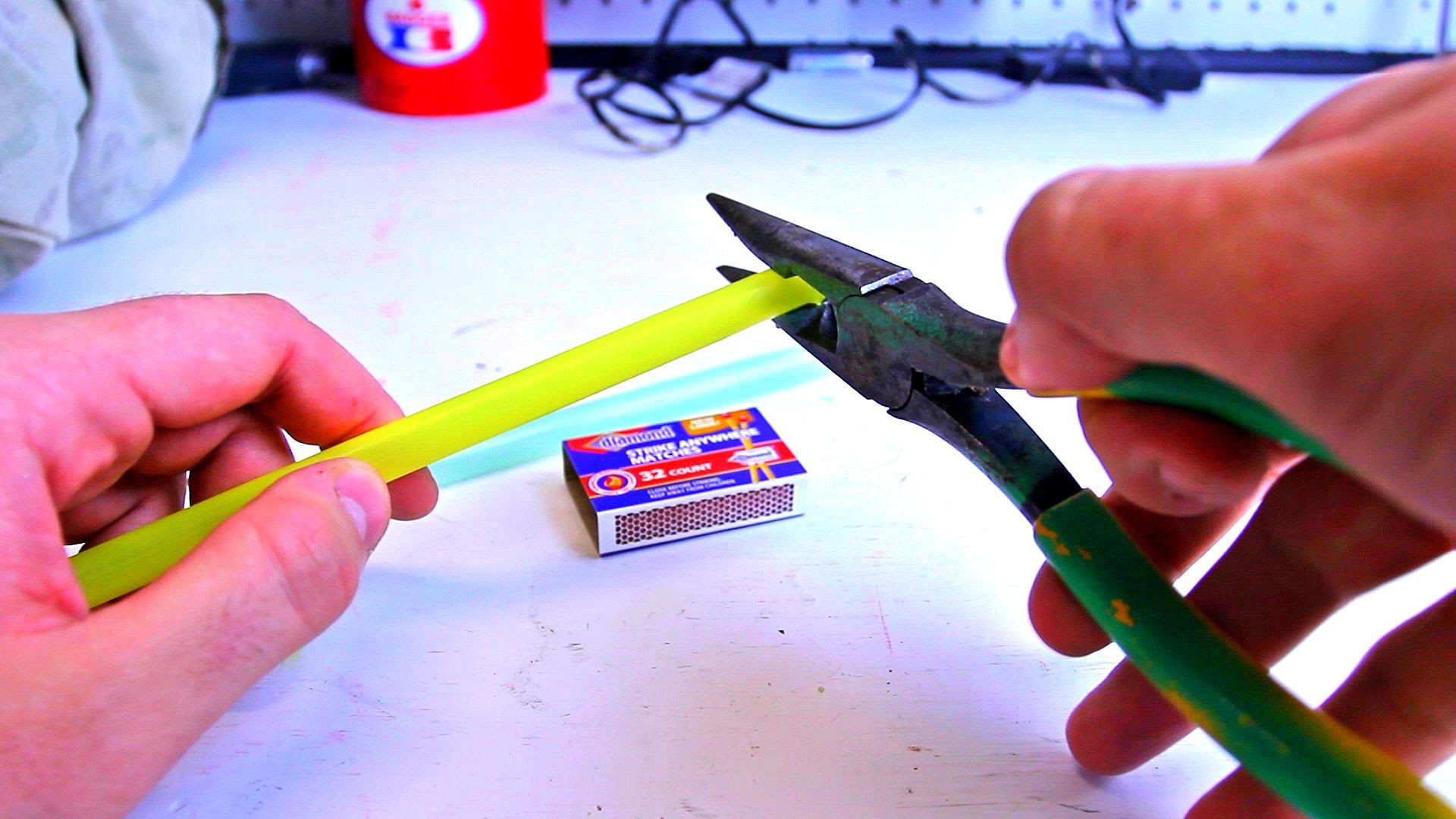Tell me what you eat, and I’ll tell you what you’re made of. Your body is your most precious thing so take care of it! Did you know that what you eat impacts not only your physical health but also your mood and your mental health?
Cancer and depression are at an all-time peak in history and we can certainly say that processed food has something to do with it.
We have put together a deadly combo list, if you consume all of these regularly, you need to start making changes to your diet asap.
Some of these foods lead to obesity high blood pressure, high cholesterol, heart disease, diabetes, Alzheimer’s, and cancer.
Soda

Soda companies say their drinks contains nutrients and vitamins but you shouldn’t really trust this. Soda is bad for you, it contains so much sugar that it’s a ticket to diabetes if you are consuming it everyday. All it contains is a bunch of sugar, food dyes and preservatives.
Soda mess up everything in your body, from your skin, blood sugar levels, to your hormones and mood. Research has shown that drinking soda is tied to early menstruation and poor semen quality. A recent study also revealed that drinking soda frequently was linked with a 20 percent reduction in the average monthly probability of conception for both men and women.
What is so bad in soda? Sugar, colourants and aspartame! Aspartame is not good for the human body and should be avoided. It has been linked to infertility and birth defects through DNA damage and endocrine disruption, which leads to hormonal imbalance.
Canned Foods
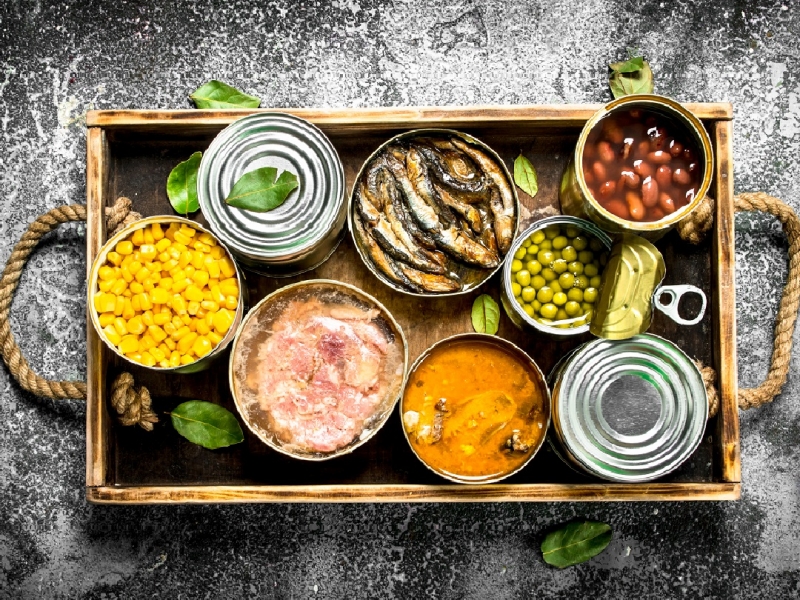
Canned food is handy and a good alternative to fresh food when you don’t have the time to cook but you should try and eat fresh food as much as you can. Here are the reasons why:
– Canned food is a hidden source of sugar and contains preservatives
– It contains trace amounts of Bisphenol A (BPA). Even at low doses, BPA has been implicated in various human cancers and developmental disorders.
– You might be ingesting aluminium. The way it works is that the food is put into an aluminum can, the can is then sealed and then heated to cook the food, to supposedly retain the food freshness. Well, it will certainly also retain the aluminum free radicals released during the heating process and contaminating the food. Over a period of time, aluminum accumulation in body can cause memory problem like Alzheimer’s.
Try and eat fresh food as much as you can! The risk of developing many chronic diseases such as cancer, heart disease, obesity, diabetes, nervous system disorder and Alzheimer’s goes down by consuming fresh foods that do not have any packaging.
Sugar

You have probably heard that sugar is addictive, and it’s true.
Eating sugar gives your brain a huge surge of a feel-good chemical called dopamine, which explains why you’re more likely to crave a candy bar at 3 p.m. than an apple or a carrot. Because whole foods like fruits and veggies don’t cause the brain to release as much dopamine, your brain starts to need more and more sugar to get that same feeling of pleasure. Similar to drugs don’t you think?
Sugar also ages your skin faster, damages your liver making it resistant to insulin and have other bad effects. It’s basically messing up your body so make sure you start putting honey in your tea and coffee rather than sugar. Also eat fresh food as much as possible, all processed food and ready-to-eat meals contain sugar.
Lunch Meats
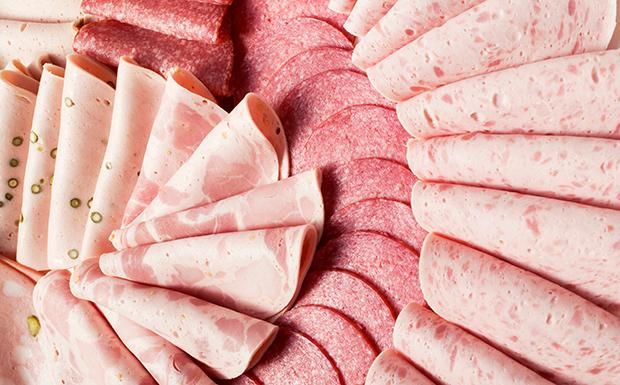
Lunch meats, also known as cold cuts, luncheon meats, cooked meats, sliced meats, cold meats and deli meats are precooked or cured meat, often sausages or meat loaves, that are sliced and served cold or hot in sandwiches. They can be bought pre-sliced in vacuum packs at a supermarket or grocery store.
This kind of meat is full of nitrates, sodium, preservatives, and additives. Also you’re not always sure where the meat was sourced and what else has been added to it …All these substances can increase the risk of cancer, heart disease, diabetes, and even behavioral problems and learning difficulties in children.

We strongly recommend you to avoid these foods. It’s better to pay a little more money to buy quality meat from your butcher, even if it means you will eat meat less often. As a matter of facts, guys, you actually don’t need to eat meat everyday, that’s what companies specialised in mass-production want you to believe!
Vegetable Oils
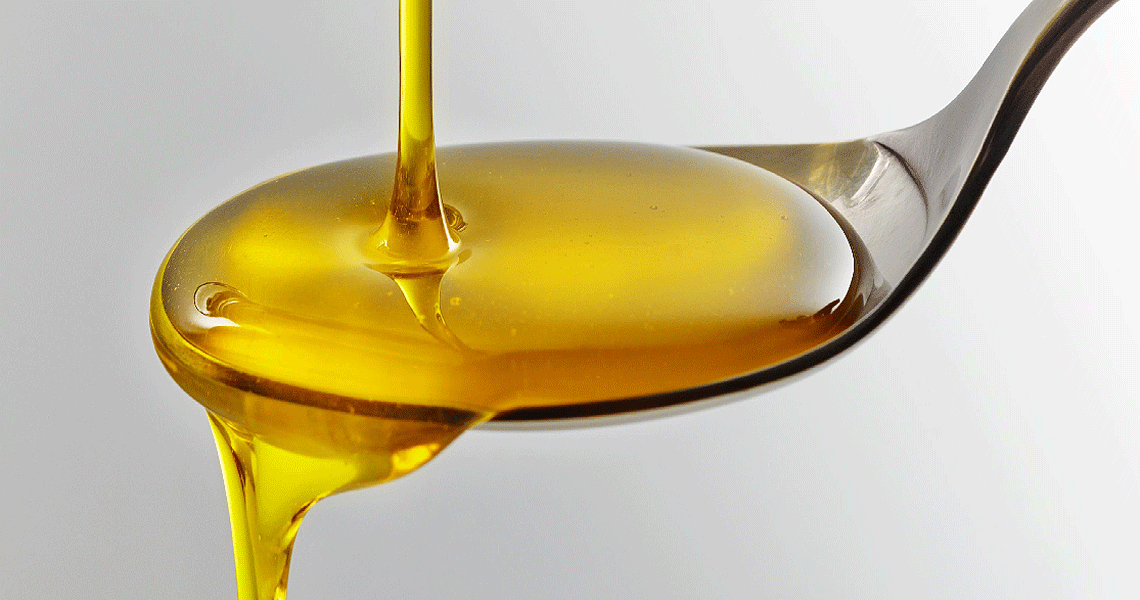
Vegetable oils such as safflower, sunflower, corn, cottonseed and soybean oils, are rich in a type of fat known as linoleic acid. That acid can lower LDL or “bad” cholesterol when it replaces saturated fats in the diet.
However, be careful about the quality of the oil you’re picking. Some of these oils are GMO and we have no idea yet what long-term effects these products can have.
Also, even though a small amount of these oils is good for us, they are incredibly fat and the amount needs to be really small. You shouldn’t consume more than 12 grams of linoleic acid per day for women between the ages of 19 and 50, and 17 grams for men of the same age. The amount drops slightly over the age of 51.
A tablespoon of oil has 120 calories, and contains 10 grams of linoleic acid, so too much in the diet can contribute to weight gain and obesity.
Margarine
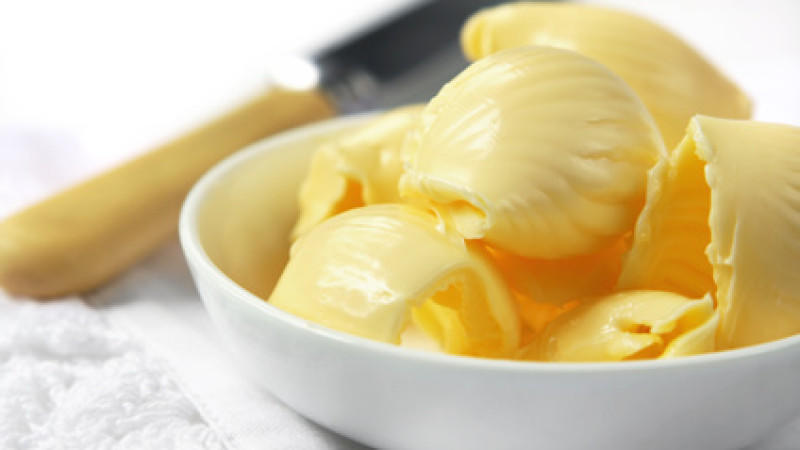
Margarine is made of vegetable oils (like canola, olive, soybean and safflower), water, salt, emulsifiers, butter flavoring, and yellow, buttery coloring. Not very natural is it? It’s highly processed so that oils remain solid at room temperature. Margarine in stick form is generally hydrogenated to keep its shape and extend its shelf life, and that’s what turns some of the oils into trans fats.
Trans fats, also known as trans fatty acids or TFA, are a type of fat found in small amounts in a wide variety of foods. They are considered a ‘bad’ fat because, like saturated fats, they can increase levels of LDL-cholesterol in the blood.
Trans-fat free margarine does exist, but it does often contains palm oil which is also super bad for you, so if you were looking in that direction for diet reasons, you may consider going for butter.
What do we need margarine for anyway? There are way healthier alternatives for cooking like butter, olive oil and avocado oil.
Chips
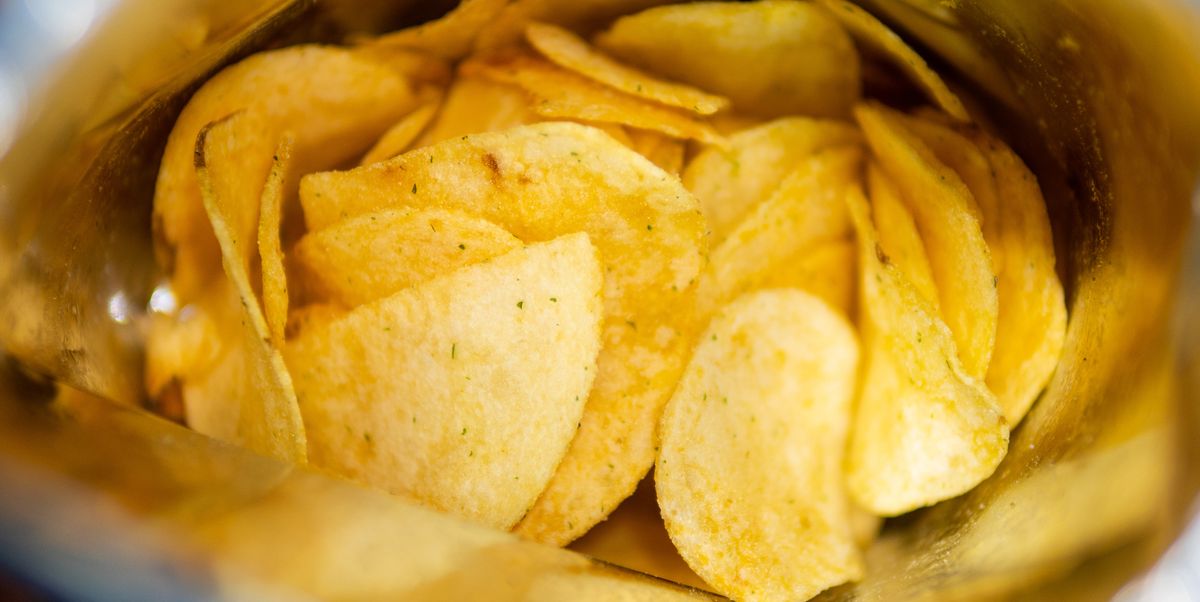
People consumed three times as many chips in 2014 than in 1974, including frozen chips bought in the supermarket, according to a National Food Survey.
A recent survey revealed that eating chips more than twice a week can double your risk of dying. Researchers tracked 4440 people aged between 45 and 79 over an eight-years period, during which time 236 of them died. Looking closely at the participants’ potato-eating habits, researchers identified a marked increase in mortality risk among those who regularly consumed fried potatoes.
It’s important that you eat chips that have been cooked in a healthy way, we mean by that in good oil that hasn’t been reheated. Be careful where you choose to eat. If chips are prepped in good oil that hasn’t been reheated, cooked for not-too-long and naked of mayo and ketchup, it’s okay to have them from time to time.
Bottled Salad Dressings
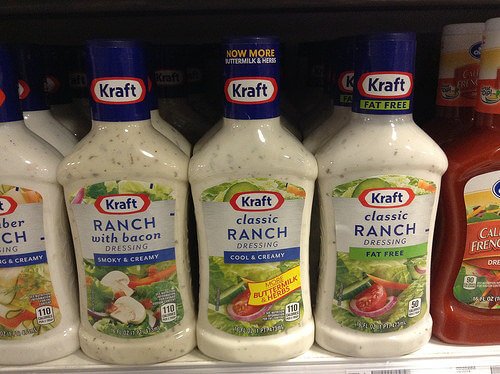
Bottled salad dressings are full of sugar, artificial colours, and high fructose corn syrup. Those dressings are chemicals and what we, human, need is to eat products from the earth and not processed food. Anyway, they don’t even taste that nice.
Drop the bottled salad dressings, and use lemon juice, apple cider vinegar, or balsamic vinegar along with some olive oil for a healthy salad dressing. It’s so much tastier and it only takes two minutes to make your own dressing.
Artificial Sweeteners
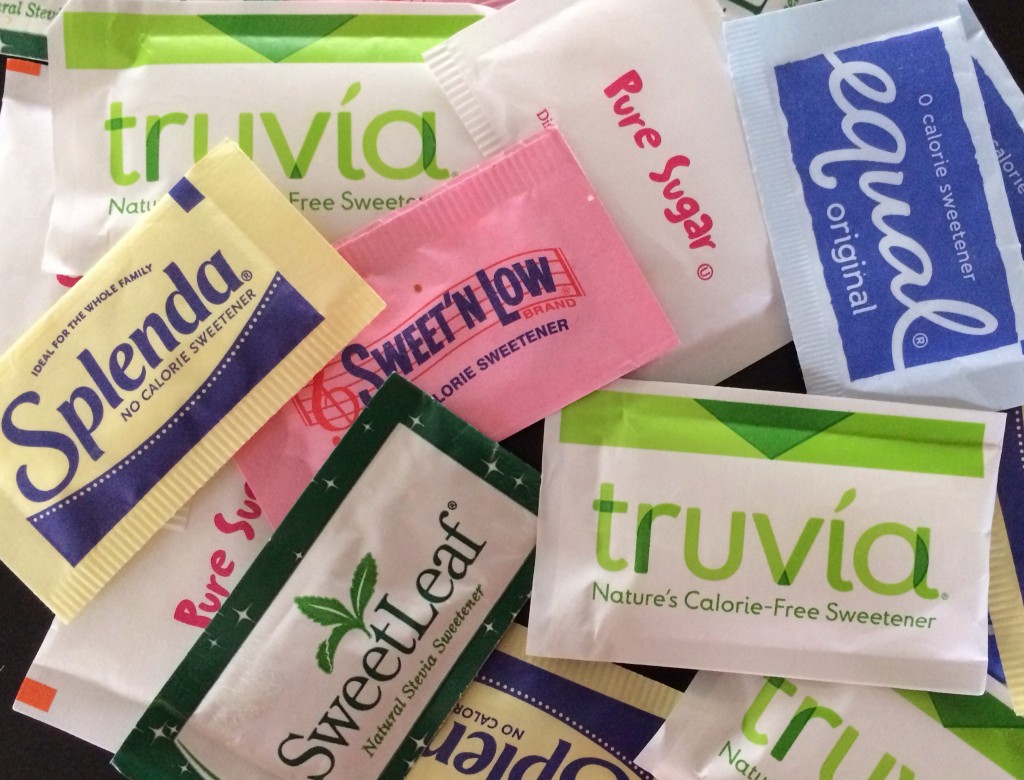
Artificial sweeteners such as aspartame, neotame, acesulfame potassium, etc. might contain fewer calories, but they can still increase the risk of diabetes, high blood pressure, heart disease, and metabolic syndrome.
Aspartame is an artificial non-saccharide sweetener used as a sugar substitute in some foods and beverages. In the European Union, it is codified as E951, make sure you check what products contains it (soda does).

Aspartame acts as a neurotransmitter in the brain by facilitating the transmission of information from neuron to neuron. Too much of it kills certain neurons by allowing the influx of too much calcium into the cells. This influx triggers excessive amounts of free radicals, which kill the cells. They basically “excite” or stimulate the neural cells to death. That’s the kind of effects it generates when consumed too much: Headaches/migraines. Fatigue, Anxiety attacks, nausea, sleep problems, depression, abdominal pains, vision problems, asthma/chest tightness.
Artificial sweeteners aren’t in any case an healthy alternative to sugar, honey is probably the best option.
Alcohol

We’re sorry to break this to you, and we know opinions on the topic are controverted but alcohol has no health benefits. It’s extremely high in calories, can cause dehydration, liver damage, weight gain, depression, and skin problems. Not to mention the bad decisions you make when under the influence.
Alcohol limit consumption is 14 units a week (1 unit being one small drink). Over that, it is a fact that alcohol is harmful for you.
It’s also a cancer risk factor. We understand that life is stressful but for your own sake, when you had a bad day, go to the gym and let go.
Refined flour
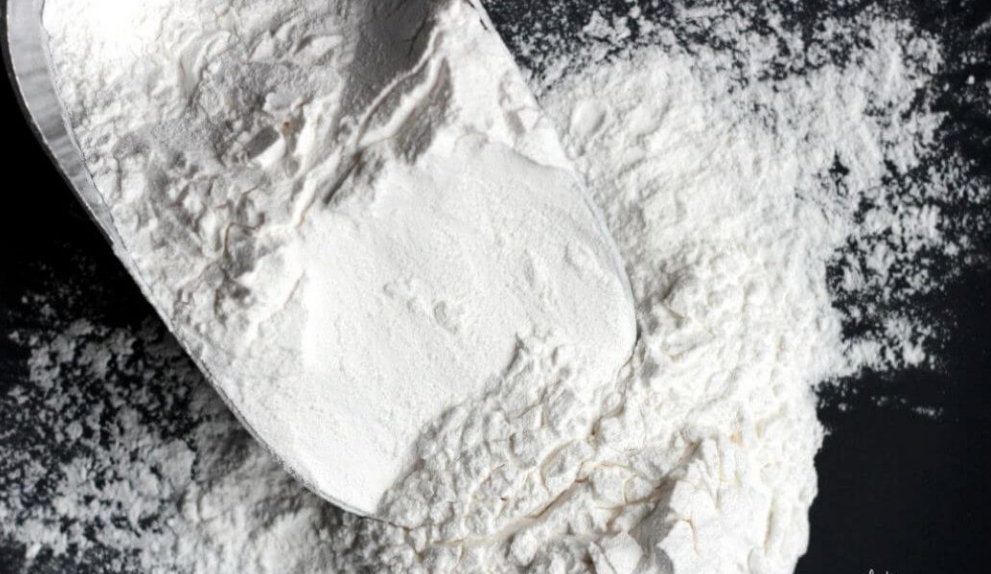
If you’ve ever been to a bakery or had a bowl of pasta, you’ve consumed white flour. White flour is a highly refined substance that is used in a variety of processed foods and baked goods because it is light, airy and cheap. Unfortunately, refined white flour is completely stripped of its nutrient value, with means no vitamins, minerals, or fats to speak of.
Vitamins and minerals in our food normally aid the workers (enzymes) of our bodies. When we remove these nutrients from what we consume, we must get them from somewhere else in order to properly metabolize food. Our tissues become the reluctant donors, and this eventually leads to a vitamin and/or mineral deficiency, which eventually leads to a health condition.
Some of the most popular foods that contain white, refined flour are:
Bread, Pasta, Cookies, Cakes, Pretzels, Chips, Muffins, Crackers, Cereals, Pizza Crust, Pie Crust, Doughnuts
Some healthy flours you can chose instead are almond flour, coconut flour, buckwheat flour (especially good for people with Celiac Disease or gluten sensitivity), teff flour (an ancient grain, healthier than modern wheat), quinoa flour.
Potatoes

We read a lot about the benefits of potatoes, but not so much on the downsides. Potatoes can cause weight gain, depending on the way they are cooked and how often you consume them.
If your potatoes are deep fried, you can expect them to have way more calories than if they’re baked. Another problem with eating potatoes in fried form is that it can be easy to get carried away with them and this is not great for your waistline! Potatoes are also High Glycaemic Foods, which means they can quickly raise your blood sugar levels. When choosing potatoes, you need to watch out for the green colour as this means they probably contain solanine, which is toxic for humans. If you see a green potato in your pack, it’s better to be safe than sorry, so throw this away. Healthier options of potatoes are sweet potatoes, which have less calories and are overall healthier for your body.
Cow’s Milk
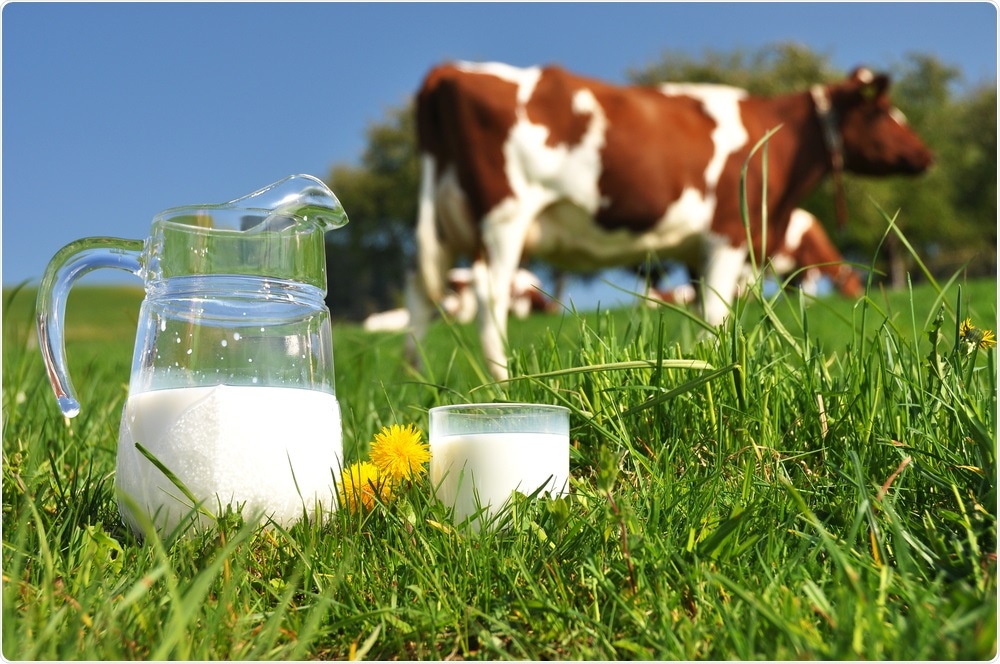
If you drink a lot of cow’s milk, it might be time to think again as it could be doing more damage than good. Cow’s milk contains lactose; a sugar which can be difficult to digest. If you are lactose intolerant, which many are, the potential effects of this on the body include nausea, bloating, cramps and many other nasty ailments which can affect day to day life. If you drink a glass of milk and end up with problems with your stomach, you can assume you are lactose intolerant. It is also thought that cow’s milk could be responsible for causing acne and migraines. If you enjoy milk, it is not to say that you can’t consume any, but it is best to avoid in large quantities, or switch to an alternative, such as almond milk, rice milk or coconut milk. Luckily, there are lots of other (tasty!) options out there.
Agave Syrup
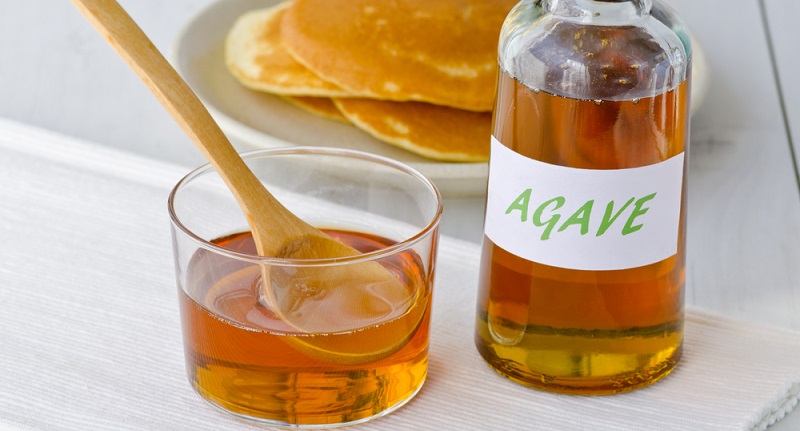
We all know that sugar is bad for us, but if you thought about replacing sugar with agave syrup, think again! If possible, this is even worse for you. The reason it is so unhealthy is that it is full of fructose, which can cause weight gain, insulin resistance and even fatty liver disease. Agave syrup is often sold as a healthier replacement for sugar, but it is no such thing and should be avoided at all costs. If you need your dose of agave syrup, just make sure it’s in small quantities, as otherwise it may be damaging for your health. It would be better to replace sugar with a sweetener, if you really need something extra in your tea or coffee! Nothing would be even better; it takes a while, but you get used to it.
Fruit Juice from Concentrate
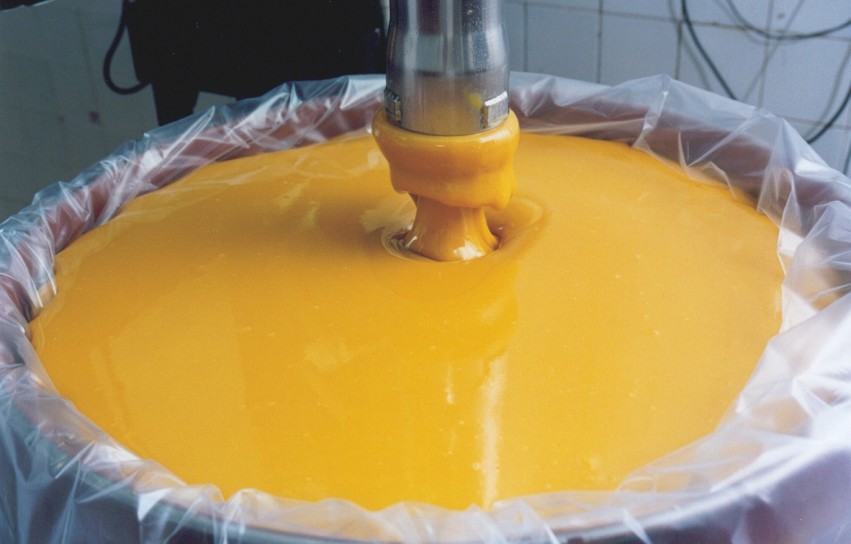
It may seem like choosing fruit juice from concentrate is just as healthy, if not healthier than drinking water, but this is untrue. The problem with fruit juice from concentrate is that water is removed through several processes; evaporation, filtration and extraction. This means that the fruit nutritional value is much less than you might expect and there are additives used to give it more colour. In short, it might look like it’s bursting with goodness, but it has little nutritional value and additivities which aren’t too great for the body. Stomach ulcers can result from drinking a lot of fruit juice from concentrate and potentially, acid reflux. It’s a healthier option than soda drinks, but it would be much better to drink fresh fruit or water. The nutrients you get from fresh fruit are much higher than fruit juice from concentrate. If you can squeeze the fruits yourself, all the better!
Sports Drinks
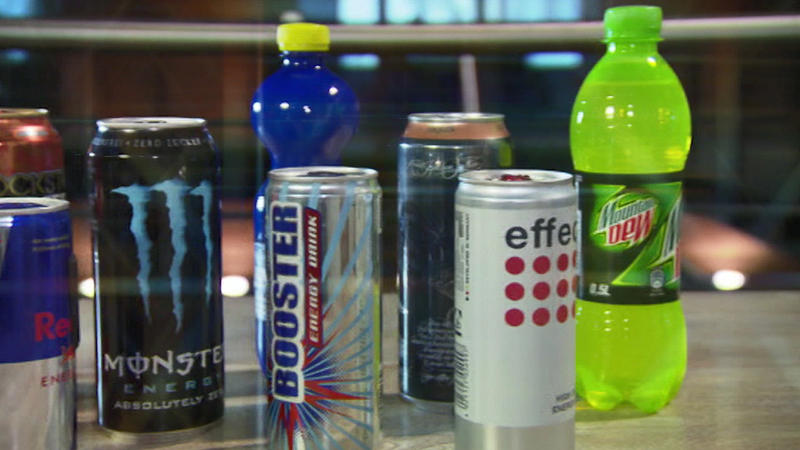
Sports drinks are often sold in a way to entice you to drink them after a workout, they seem to be full of vitamins and minerals to help you recover after a workout. Unfortunately, this is not the case and sports drinks are not as healthy as they may appear to be.
The reason is that sports drinks contain a lot of sugar. Not as much as soda drinks but not far off it. They also contain artificial flavours and often food colourings. The sugar in the sports drink will spike your insulin, giving you a burst of energy but will cause you to slump straight after. Sports drinks are not good for your insulin or your human growth hormone production. The sodium levels are also often too high in sports drinks, so generally speaking, it is best to avoid these drinks. Nothing can really beat water after a workout, it will hydrate you, without any added sugars or other additives.
Ready Meals
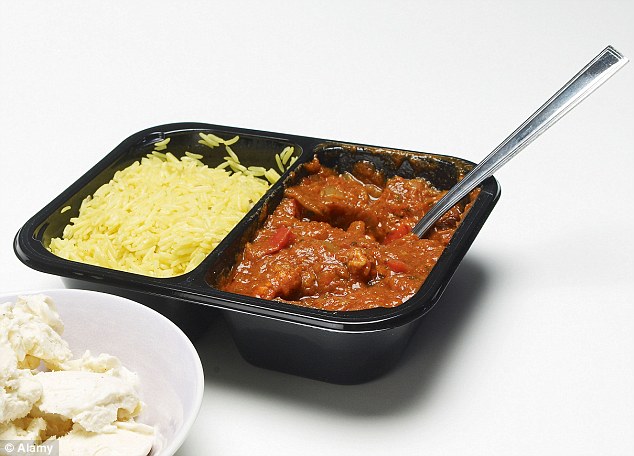
Ready meals may seem like a convenient choice when time is not on your side, but they lack the nutrients you get from preparing and cooking your own meal. Like takeaways, ready meals also have a very high sugar and salt content. The portions may be smaller than a takeaway, but they are so small that they probably won’t fill you up, so you’ll just feel like snacking again soon after. Ready meals also tend to be packed full of chemicals and contain fake vitamins and minerals. Ready meals may seem like a simple option, but they are not worth the money and there are many quick, simple recipes you can cook from scratch.
Raw Cashews
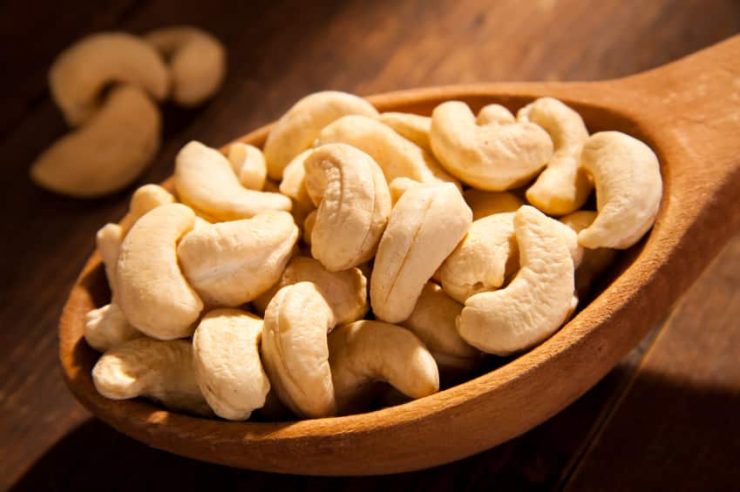
Cashews are well known to be a good addition to your diet, as they contain lots of the good stuff, including protein, fibre and iron. It is important to stick to small quantities though, as they are quite high in calories. Cashews taste great but you want to avoid eating raw cashews. Raw cashews are rarely found in supermarkets but if you find them anywhere, it is safer to avoid them. Cashews in this form are highly poisonous as they contain urushiol, a toxin which is also present in poison ivy and poison oak. The potential side effects include itching of the skin and rashes etc. It may have more serious consequences depending on your reaction. It is safe to eat cashews you find in shops, as these have been roasted to destroy the toxins. However, if you find raw cashews anywhere, it is better to avoid at all costs, as you never know how your body might react.
Kidney and Lima Beans
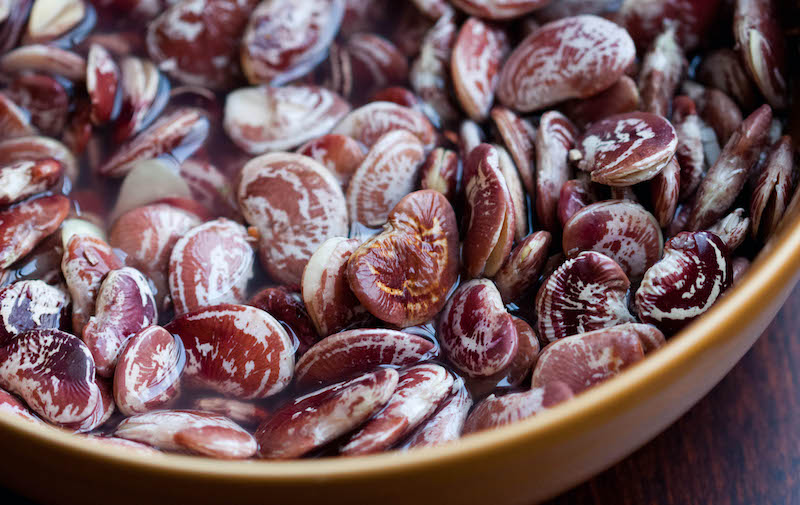
Kidney and lima beans are fine to eat if they are cooked but you should never eat these beans raw. The reason for this is that raw kidney beans contain lectins which, in undercooked foods, are toxic. Raw lima beans have linamarin and this can turn into hydrogen cyanide, which is also toxic. If you eat raw kidney or lima beans, you could end up very sick. In high quantities, it could even be fatal. It is best to avoid eating beans in raw form, if you cook and drain the beans, they offer a lot of nutritional benefits. Beans are the types of food which you would think would be safe to eat raw but if you are about to tuck into a tin of raw beans, think again – unless you want to end up with nausea, diarrhoea and sickness. Boil for around ten minutes to get rid of all the nasty toxins.
Nutmeg

This delightful spice used as an addition to coffee and other treats, especially during the festive period is not as innocent as it may seem. It may be hard to believe this, but nutmeg is also a hallucinogenic drug, if consumed in large quantities. The powerful drug is like taking a dose of LSD, with effects lasting as long as 12 hours. The side effects after this include a dry mouth and panic attacks and symptoms similar to a hangover, lasting as long as two days. A large dose would be difficult to eat as nutmeg is not soluble and is not designed to be consumed in this way. Nutmeg of course, in small doses, sprinkled over food etc is perfectly fine but avoid in large doses. You would really need to be seeking to eat a high dose though, as it won’t be very enjoyable chocking down large quantities of nutmeg.
High Fructose Corn Syrup

This is a sweetener which is made from corn starch and can be found in a range of foods, including soda, candy, frozen foods and even salad dressing. You may even find it in your breakfast cereal, granola bars or ice cream. It is often sold as a healthy option, but it is far from it. There are many more foods which contain high fructose corn syrup, so it is worth checking the label if you are concerned. It may seem like a good alternative to sugar, but, it’s just as bad for you. High fructose corn syrup may be a contributor to obesity, cancer, tooth delay, liver failure and other problems, especially if it is consumed in large quantities. It is best to avoid this altogether as it doesn’t offer any real value to your health. The foods which contain high fructose syrup, including candy and soda, should never be eaten with any regularity anyway, as they are not good for your overall health.
Rhubarb Leaves
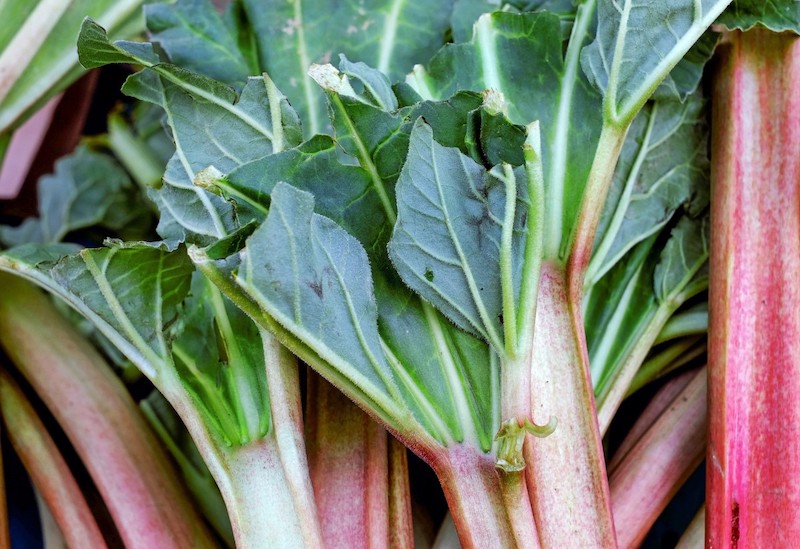
Rhubarb is often used in pies, desserts or eaten on their own, but it is important to stick to eating just the stalk and not the leaves. Rhubarb leaves contain a chemical compound, oxalic acid which is poisonous. This is also present in other everyday foods, such as broccoli, but the quantity is much higher in rhubarb leaves, which is why it is poisonous. If you eat a high volume of rhubarb leaves, it could be lethal but even if you stick to a small amount, you can end up being sick or suffering from nausea. Other known symptoms of consuming rhubarb leaves include, burning in the mouth and throat, kidney stones, eye pain and seizures. There is not really any safe way to eat rhubarb leaves, as you don’t know what effect they may have on you due to the oxalic acid, so best to just avoid these completely.
Raw Eggs
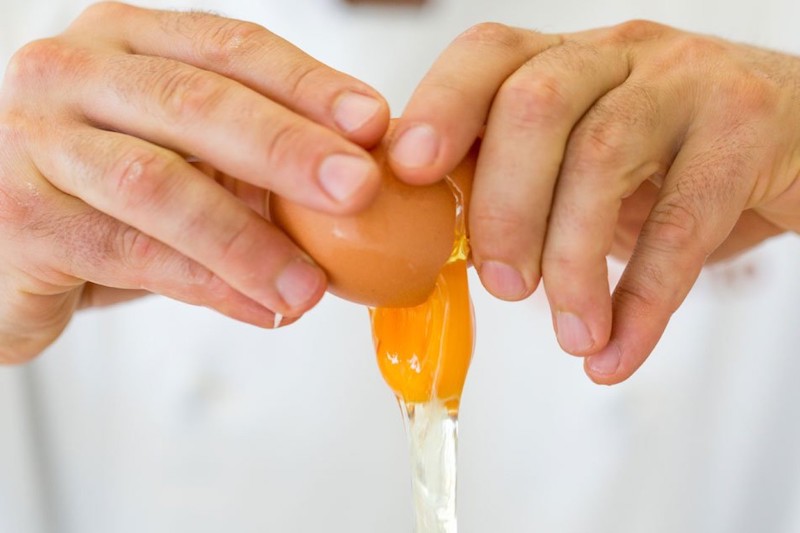
You’ll probably heard of people who eat raw eggs, they are particularly popular with athletes. Although there are some potential benefits to eating raw eggs, including Vitamin D and omega-3’s, there are also potentially serious drawbacks. There is the potential for raw eggs to be contaminated, particularly with the hazardous bacteria, Salmonella enteritidis, usually just known as salmonella. Salmonella is basically food poison from eating contaminated food which lives in the stomach and grows. As the stomach and digestive tract are affected, the result of this is diarrhoea, cramping, nausea and other stomach problems. The ailments could potentially be even more serious than this. The likelihood of raw eggs being contaminated is small, however, it may be worth avoiding eating eggs in this way, as you can never be sure what you’re getting. Cooking your eggs is a much healthier option!
Raw Meat
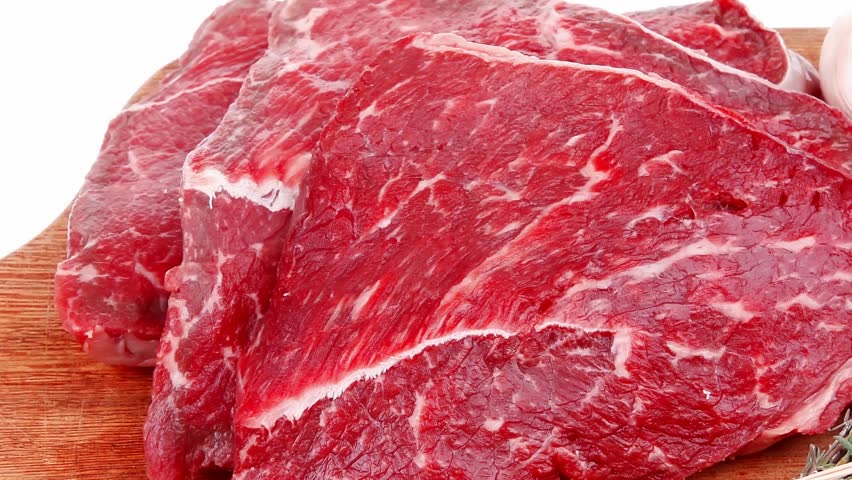
If raw meat is contaminated, it can cause toxoplasmosis, a disease which can lead to several ailments, including muscle pain, headache, sore throat and enlarged lymph nodes. The symptoms may be more severe if you already have problems with your immune system. These may include blurred vision and confusion. Of course, not all raw meat is contaminated and even if it is, there is nothing to guarantee that you’ll get sick, but there is always a risk. The risks associated with eating raw meat are not as bad if the meat is fresh, however, if the meat has been left out in the air, it will start to decay, which means it will attract bacteria. Human beings are not really designed to eat raw meat, so it is highly likely that you will have an upset stomach, if you are not used to eating it. The best way to prevent this is to make sure your meat is cooked all the way through.
Raw Honey
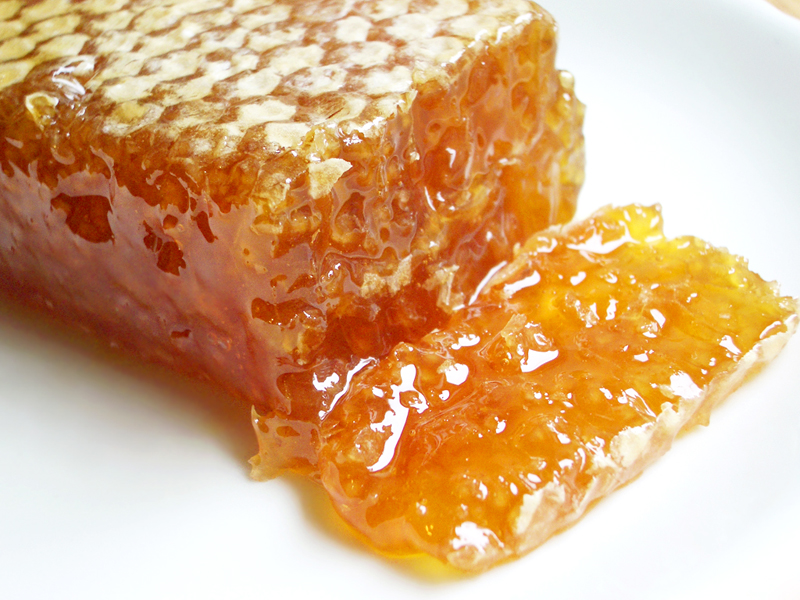
We are often told about the benefits of honey, not so much about the downsides. Honey is filtered, which removes the particles and pollen grains, but raw honey can end up with some pollen grains and this has been known to cause allergic reactions in some people. Those with hay fever should be extra careful about consuming raw honey as this could cause serious reactions. Raw honey may also have the bacterium Clostridium botulinum which can cause intestinal botulism, and this can have some nasty symptoms, including lethargy, muscle weakness and in some cases, it could even be fatal. Intestinal botulism is most common in younger children, but it can affect anyone. It is advisable not to feed honey to young children under one year old. If you have allergies, it is also a good idea to avoid eating raw honey.
Bitter Raw Almonds
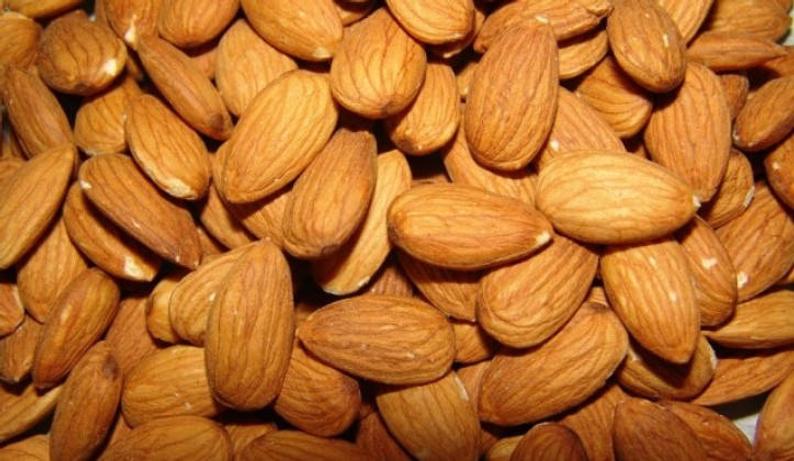
Almonds are a super healthy snack and we are often encouraged to add these to our diet. However, if you have ever bitten into a bitter raw almond, there is a real reason it tastes so bitter, and it’s not pretty! Almonds have a small amount of cyanide in them, but bitter almonds suggest that there is a higher quantity of cyanide than there should be. Cyanide can prevent oxygen getting around our body, if eaten in high quantities and this can cause a drop in blood pressure, respiratory failure and in some cases, it could even cause death. Almonds are great but if you taste a bitter almond, don’t be tempted to carry on and eat it, these almonds are not good and shouldn’t be consumed. Cyanide is good in small quantities which you get from normal almonds, but in large quantities, cyanide’s effects are deadly.
Other self-sufficiency and preparedness solutions recommended for you:
Healthy Soil + Healthy Plants = Healthy You
The vital self-sufficiency lessons our great grand-fathers left us
Knowledge to survive any medical crisis situation
Liberal’s hidden agenda: more than just your guns
Build yourself the only unlimited water source you’ll ever need
4 Important Forgotten Skills used by our Ancestors that can help you in any crisis
Secure your privacy in just 10 simple steps
Tell me what you eat, and I'll tell you what you're made of. Your body is your most precious thing so take care of it! Did you know that what


 The most common booby trap as far as prepping is concerned is probably the tripwire.
The most common booby trap as far as prepping is concerned is probably the tripwire.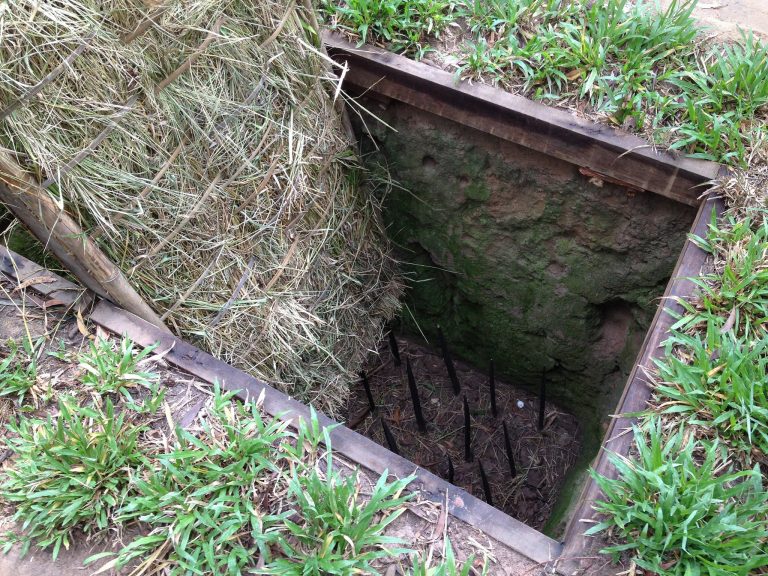 Spike booby trap used during Vietnam.
Spike booby trap used during Vietnam.
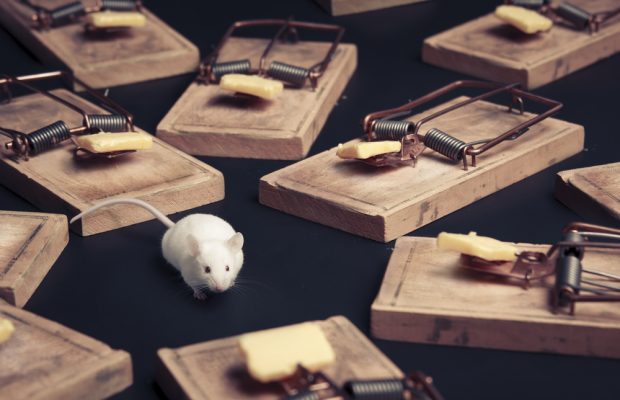
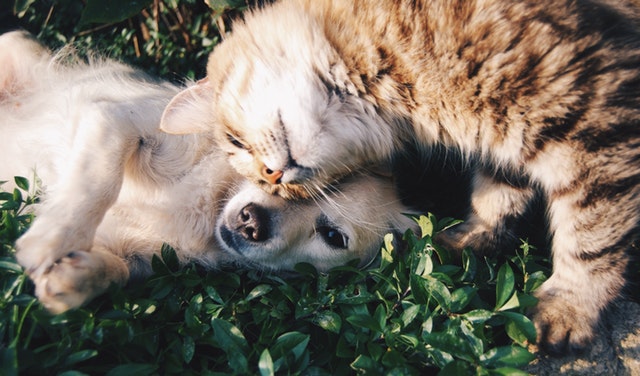
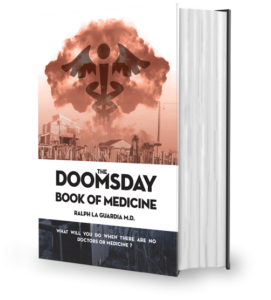
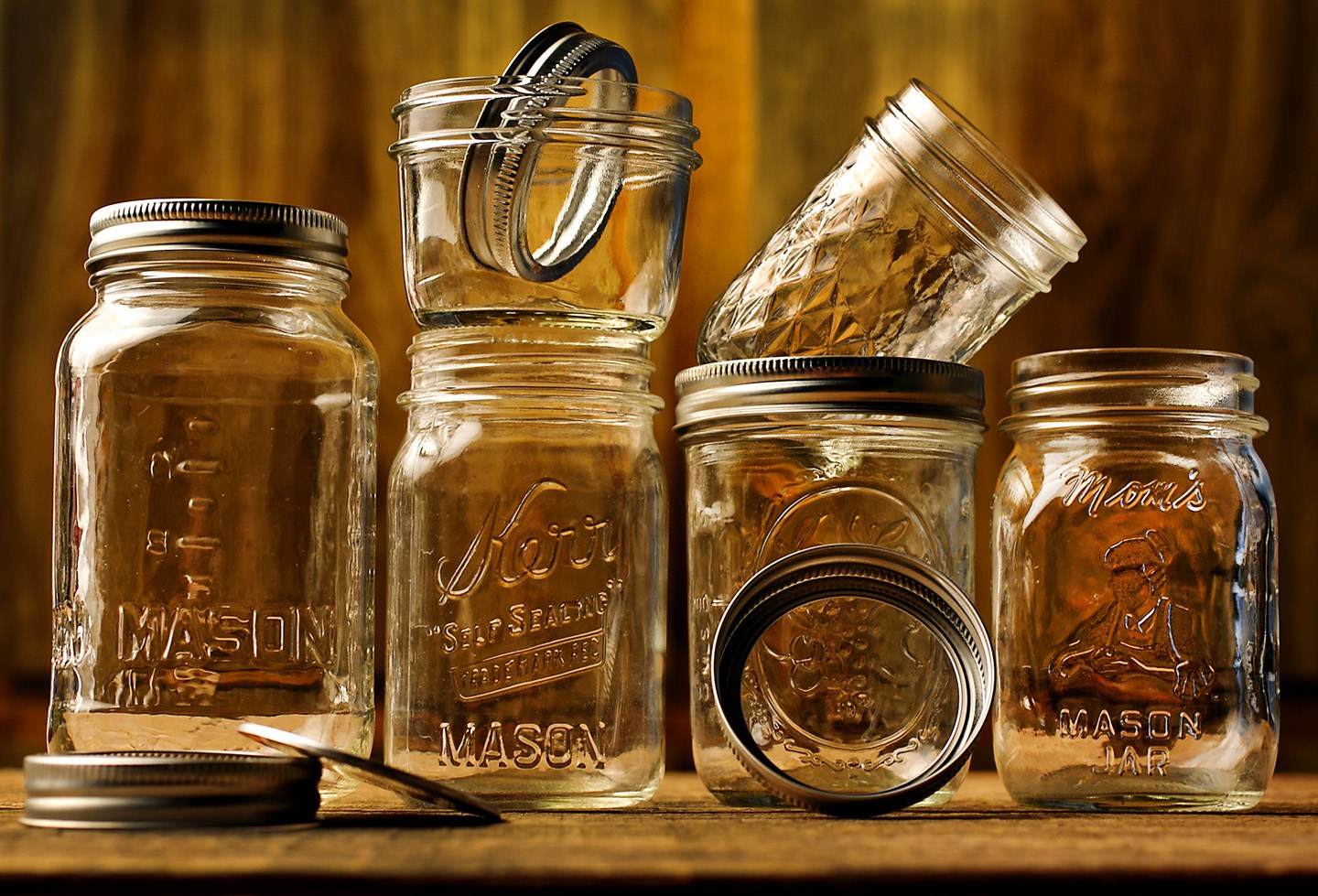

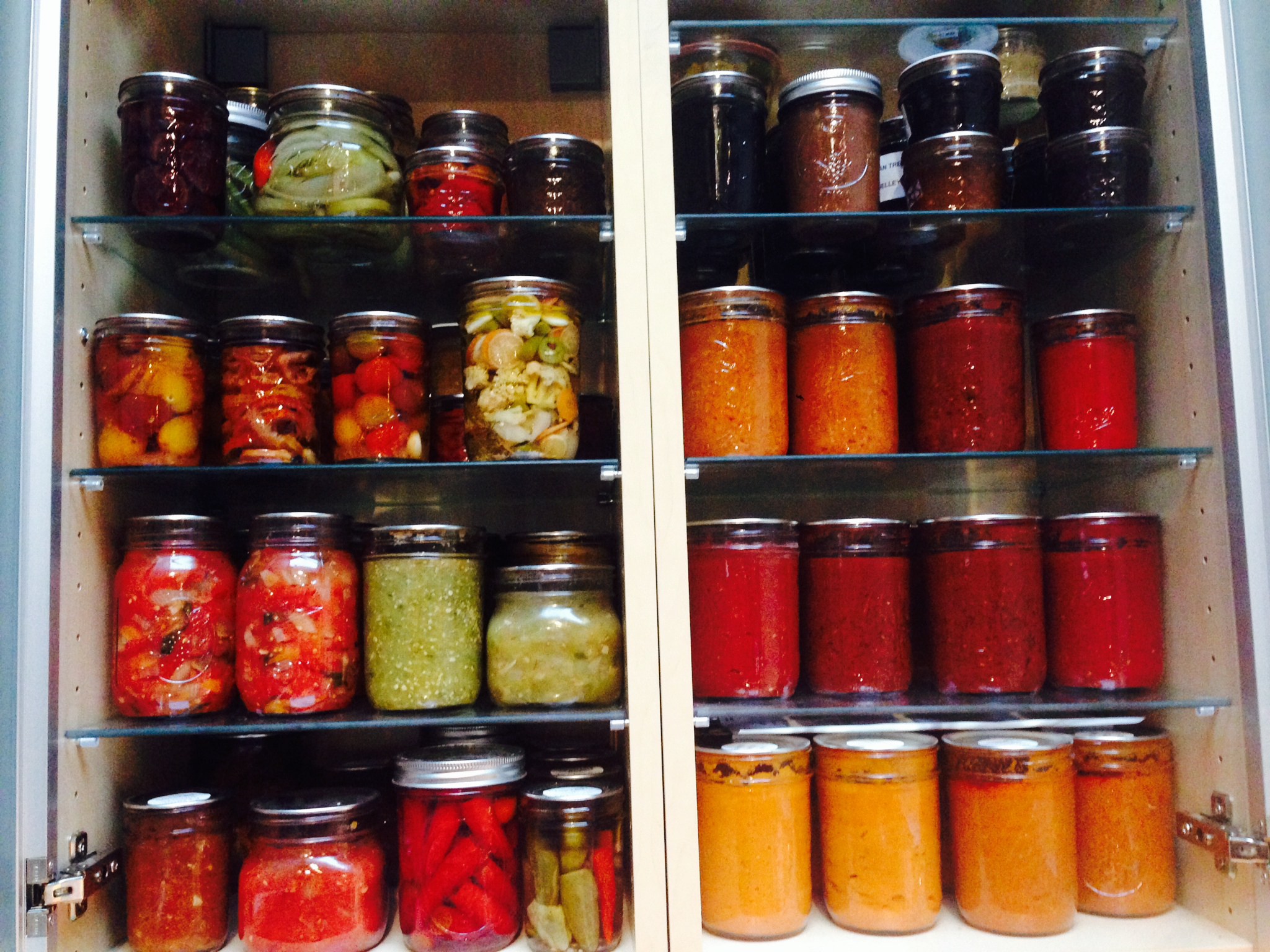

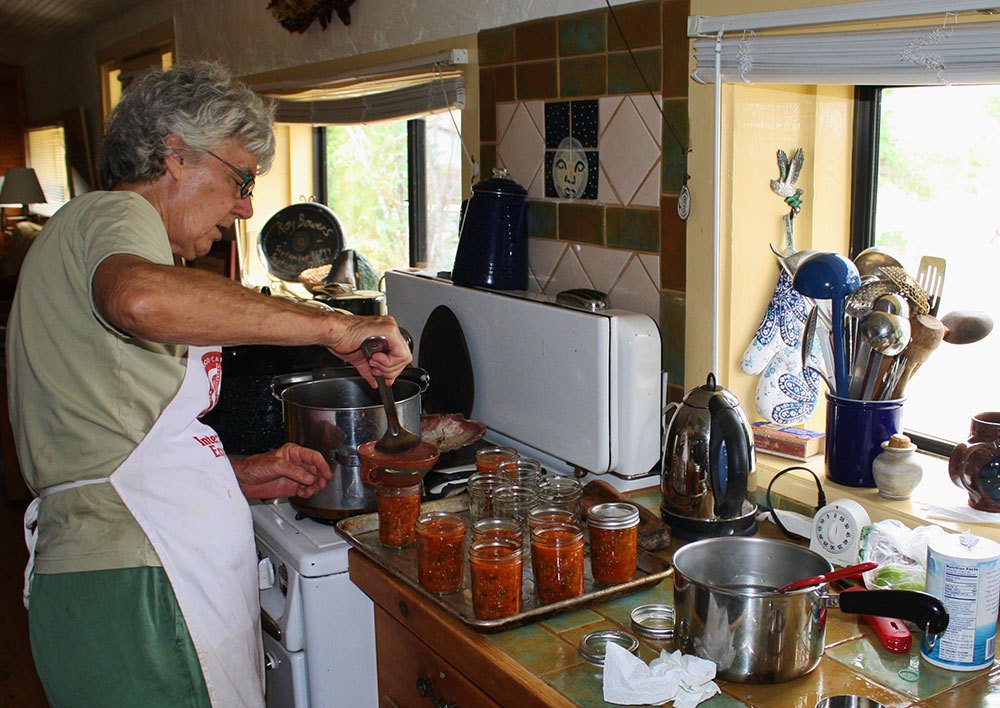
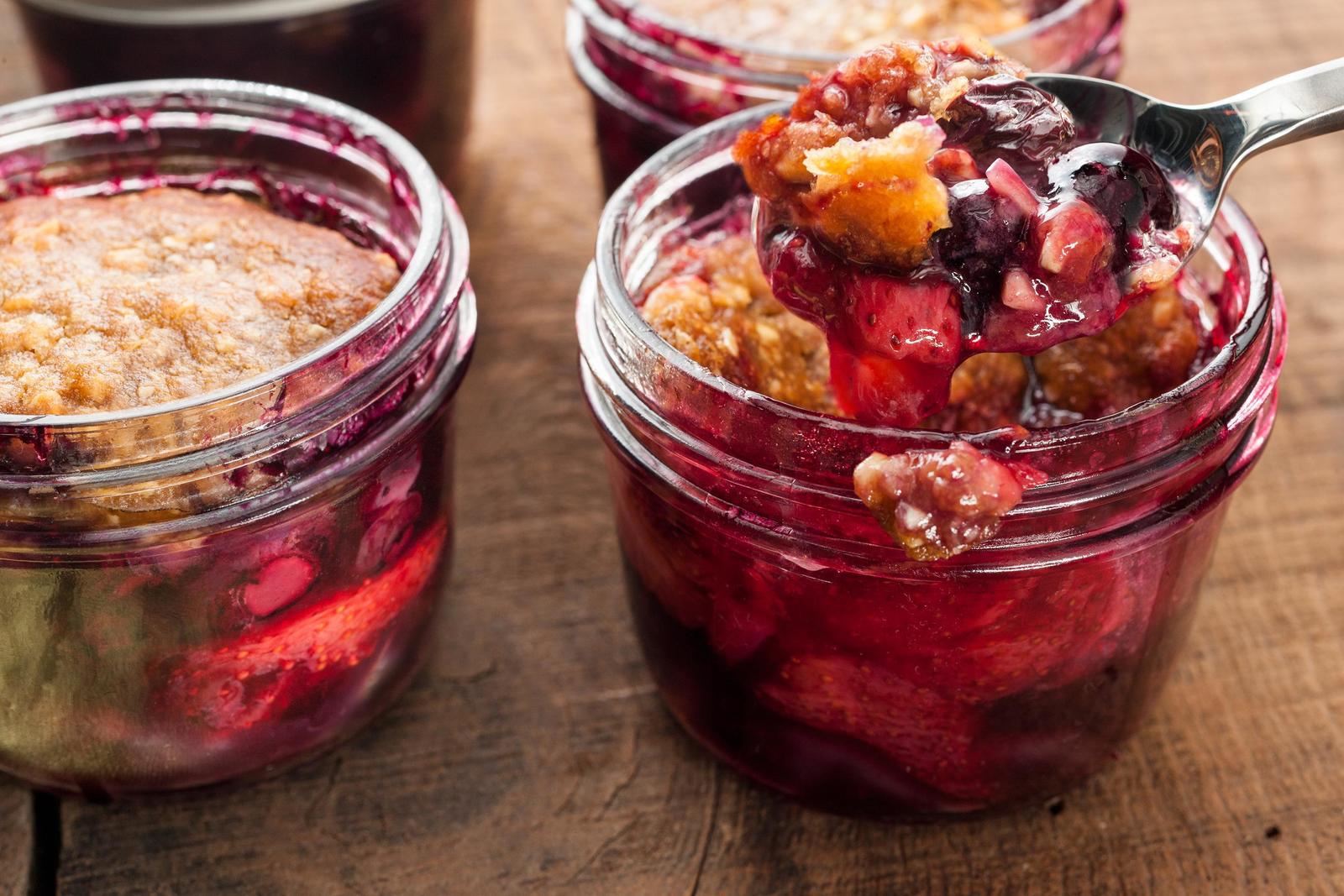










































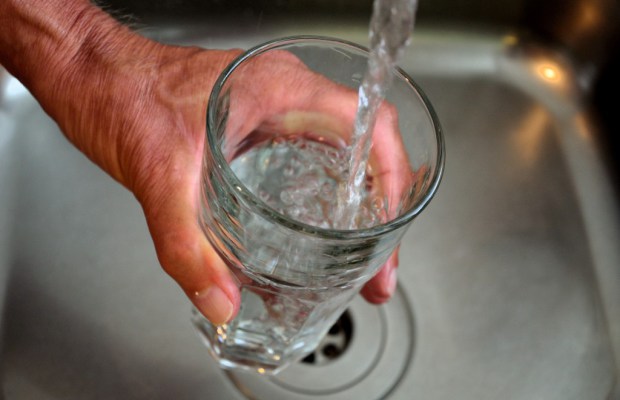



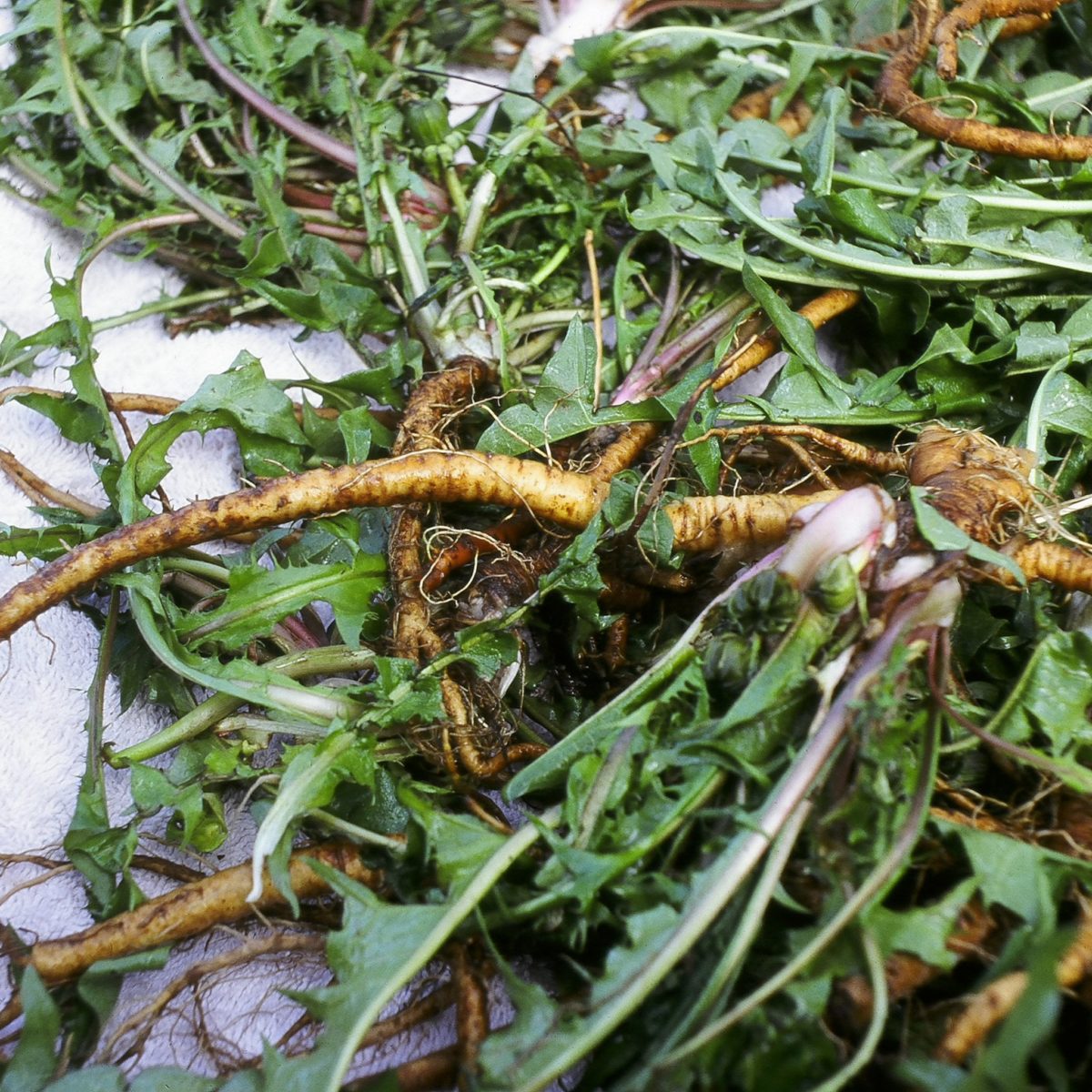

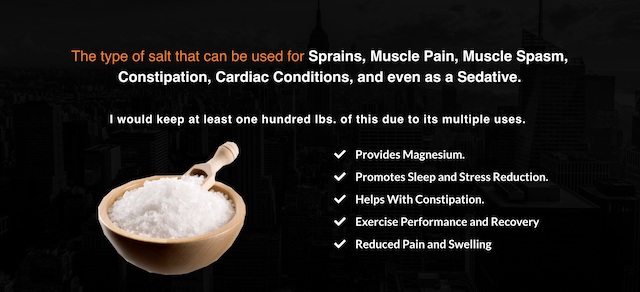
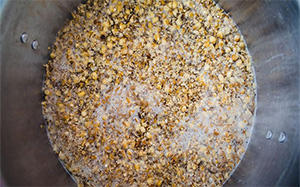 A decoction is an infusion made with water. It may be consumed as a tea but is often made stronger. To make a dandelion root decoction:
A decoction is an infusion made with water. It may be consumed as a tea but is often made stronger. To make a dandelion root decoction: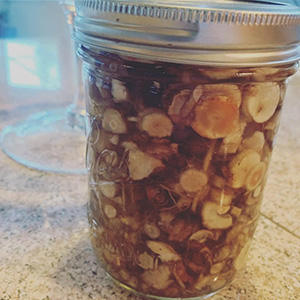 Because it is an alcohol extract, Dandelion Root Tincture retains some different extracts than the decoction. It can also be made ahead and stored for long periods so that it is always available. It is valuable for people who do not like the tea, since less is needed for the same effects
Because it is an alcohol extract, Dandelion Root Tincture retains some different extracts than the decoction. It can also be made ahead and stored for long periods so that it is always available. It is valuable for people who do not like the tea, since less is needed for the same effects